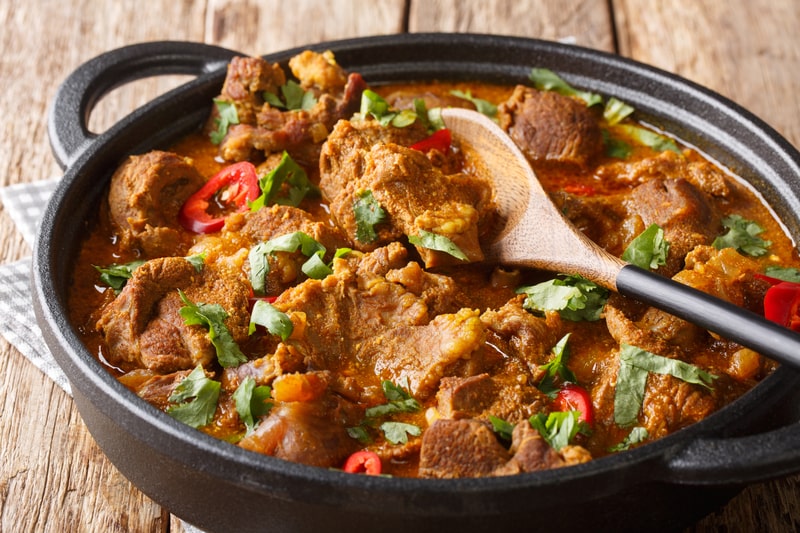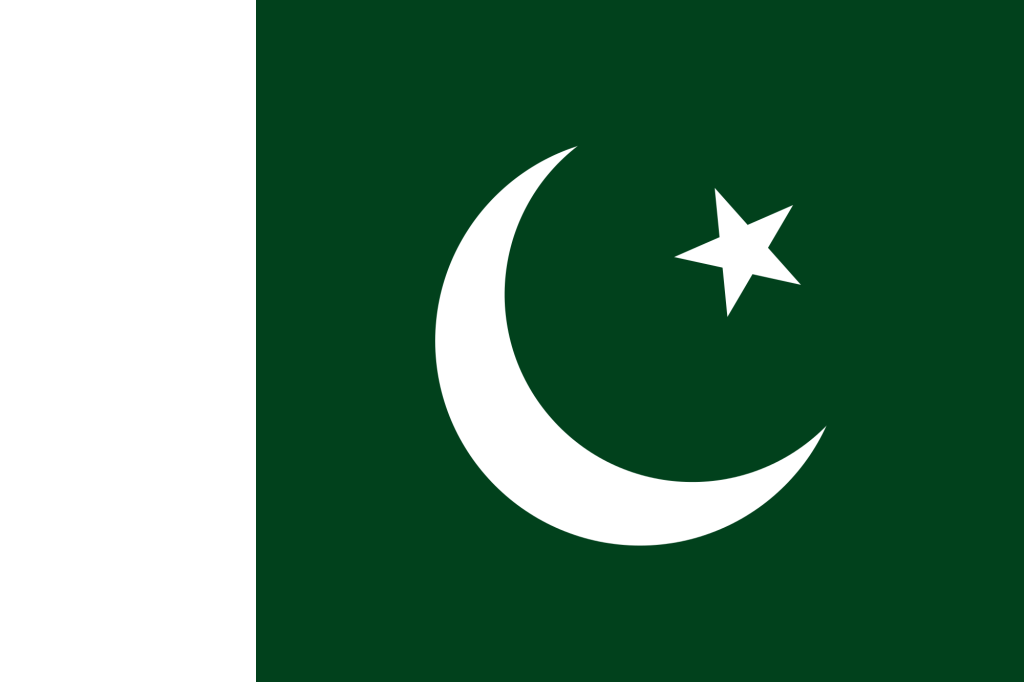Last updated on September 30th, 2022
Pakistan is a country with a very big and diverse population. There are several ethnic groups in the Pakistani society. Here are the main ones:
– North: Wakhi, Shinaki, Dards, Burusho, and Baltis;
– South: Muhajirs and Makrani;
– East: Kashmiris, Punjabis, Sindhis, and Potwaris;
– West: Pashtuns, Hazaras, and Baloch.
In such a diverse country, honor, pride, and shame are all common values which influence people’s behavior. In order to avoid social ostracism, the Pakistani protect their reputation — both their personal reputation as well as the reputation of family members.
20 facts about Pakistani family customs, traditions, and hospitality
1. The Pakistani have a sense of extended family, which goes beyond the nuclear family and includes immediate and distant relatives, friends, fellow tribe members, and even neighbors. Loyalty to family is above any and all other relationships — even business.
2. So, hiring relatives is a common practice which has a positive spin in Pakistani culture, due to this high sense of loyalty.
3. Forming new relationships is very important in Pakistan, and asking friends and colleagues to make business introductions is a normal thing to do.

4. One important observation to be made here is that it is very inappropriate when someone asks questions to a Pakistani about any of their female relatives, especially their wives.
5. Casual dating is disapproved and many marriages are arranged by the family elders even today.
6. When there is no arrangement, parent approval is still necessary — in Pakistan, marriage is seen as a responsibility of the parents, especially due to the need of protecting the family’s honor.
7. Women stay in the home and men go to work. When a woman works, they are usually involved in fields such as nursing or teaching.
8. Women have the same rights as men, including voting and being educated, a woman has been a prime minister in the past, there are many female judges as well.
9. The reason for the women stay at home is that Pakistani families are larger — 6 children is considered normal — and the woman is responsible for raising the children, along with the extended family as well.
10. Living closely to extended family also emphasizes the transmission of Pakistani customs and traditions across generations, as well as the respect for their elders and the traditional Pakistani gender roles too.
11. When entering a Pakistani home, usually you will need to remove your shoes. The best way to make sure is to look at your host’s feet and follow suit.
12. Greet the elders first; the greetings exchange is usually made between members of the same sex. Men will shake hands and, when closer in relationship, might as well hug each other. Women will hug and kiss.
13. You will notice that Pakistani do not use first names, unless among close friends.
14. Titles denote respect: use them.
15. Also, bring a small gift to the hostess — good chocolates are the best option for men, while women may also gift flowers (non-white, which are only for weddings).
16. Give your gift with both hands; do not give alcohol; your host will not open your gift when receiving it.
17. You will probably be served tea, since it is considered a sign of hospitality.
18. Taboo subjects are sex, dating, homosexuality, alcohol, and questioning Islamic beliefs.
19. Eating utensils are used only by Westernized families, so you have to eat with your right hand.
20. Although guests are served first, you should only start eating after the oldest person starts.
Pakistani cuisine, given the variety of ethnicities and geography, is very diverse. However, you can be assured of two things:
1. Red meat is halal and slaughtered according to the Islam; and
2. Pork is forbidden and virtually impossible to find. Here is what the average Pakistani home-made meals look like:
– Breakfast: tea, bread, eggs, honey, nuts, and fruits.
– Lunch: meat-based curry and rice
– Dinner: this is the big family meal with meat kebab, spicy lentils with gravy, naan flat bread, among others.
10 other food-related facts
1. Curry and spices are used very often in Pakistani cuisine, which leads us to #2;
2. As a consequence, plain white rice is the most common side dish.
3. Lentils are also very common.

4. Meats — beef, lamb, chicken, and fish — are often marinated in yogurt.
5. Southern Pakistani food is much spicier.
6. Northern Pakistani cuisine is centered around plain barbecued meat.
7. As a rule of thumb, seafood is usually curried.
8. Food is often fried in ghee, a type of butter.
9. The Pakistani also eat many pickles, preserved foods, and chutneys.
10. Pakistani drink green tea throughout the day.
About the flag of Pakistan

As for Pakistani dresses, you will find that Pakistani are very formal, and also respectful of the Islamic code. Women clothes are also conservative, covering the skin and very loose. Pakistani men are required to cover their bodies between the navel and the knee, so make sure your clothing covers these areas too.
Pakistan is a relatively new country in world history, having received its independence in the partition of India in 1947.
Adoption
Its national flag dates back to the same year, three days before independence occurred. It was officially retained as the national flag nine years later, in 1956, when the country’s constitution was also officially established.
The same flag that was originally created remains in use today.
Colours and symbols
The Pakistani flag is dark green in color, with a white crescent moon and a five pointed star present in the center.
These symbols are intended to represent light and progress. In addition, they are traditionally associated with Islam, the most popular religion of the area.
Dark green is the traditional color of the Muslim faith. A vertical white stripe is added to the hoist (pole) side of the flag to represent the religious minorities that are present in the country, mostly Christians and Hindus.
Design
The flag was designed by Syed Amir-uddin Kedwaii. It was brought to a meeting of the Constituent Assembly of the Dominion of Pakistan on August 11, 1947, and officially adopted. This makes the flag three days older than the nation itself!
The design of the flag was based on a design of the banner for the All-India Muslim League. This organization worked towards Pakistan’s Independence in the early 20th century and uses the same colors and symbols in a slightly different format.
The British viceroy of India, Louis Mountbatten, also proposed a flag design in 1947, featuring the British Union Jack in the upper left corner of the flag, coupled with the Muslim moon and star on a green backing. This proposal was promptly rejected.
When the flag’s design was formally adopted with the Constitution in 1956, it included details on the flags design and specifications such as measurements and proportions necessary to make the flag official, including a length: width proportion of 3:2.
There are also specifications for the flag’s dimensions for different uses, such as ceremonial uses or for flying from cars.
Significance
The flag is very important to Pakistan’s culture.
Flag raising and lowering ceremonies are elaborate and celebrated as daily and holiday rituals. These are completed with fanfare at schools, government buildings, and border crossings, particularly at the border with India, where the event has become a tourist attraction.
The government of Pakistan has very specific rules and regulations when it comes to the flying of the national flag, including mandating its display on certain days, such as Pakistan’s independence day.
When one searches for information about the flag of Pakistan, they may find other flags, as Pakistan has used other insignias to represent its military and the territory has been occupied by numerous empires over its history.
The president and prime minister of Pakistan also each have their own individual representative flags.
However, the dark green crescent moon flag representing the country itself has been the one and only representative of the country since its establishment. This is a very unique fact that not many countries can boast.
Pakistan – country at a glance
| Etymology | The word "pak" means "pure" in Persian or Pashto, while the Persian suffix "-stan" means "place of" or "country," so the word Pakistan literally means "Land of the Pure" |
|---|---|
| Official name | Islami Jamhooriya-e-Pakistan (Islamic Republic of Pakistan) |
| Independence | 14 August 1947 (from British India) |
| Capital City | Islamabad (33°40′N 73°10′E) |
| Largest City | Karachi (24°51′36″N 67°00′36″E) |
| Total area | 796,095 sq km |
| Population | 238,181,034 (July 2021 est.) |
| Suffrage | 18 years of age; universal; note - there are joint electorates and reserved parliamentary seats for women and non-Muslims |
| Demonym | Pakistani |
| Literacy rate | 59.1% |
| Government | Federal Islamic parliamentary republic |
| President | Arif Alvi |
| Prime Minister | Shehbaz Sharif |
| Official language | English and Urdu |
| Father of the Nation | Quaid-i-Azam Muhammad Ali Jinnah (1876-1948) |
| National Poet | Allama Muhammad Iqbal (1877-1938) |
| National language | Urdu |
| National anthem | "Qaumi Tarana" (National Anthem) Approved in August, 1954 Verses Composed by: Abdul Asar Hafeez Jullundhri Tune Composed by: Ahmed G. Chagla Duration: 80 seconds |
| National symbol | star and crescent, jasmine |
| National colors | green, white |
| National holiday | Pakistan Day, 23 March |
| National Flower | Jasmine |
| National Tree | Deodar (Cedrus Deodara) |
| National Bird | Chakor (Red-legged partridge) |
| National Animal | Markhor |
| Borders | Afghanistan - 2,670 km, China - 438 km, India - 3,190 km, Iran - 959 km |
| Currency | Pakistani rupee (₨) (PKR) |
| Religion | 95% Muslims, 5% others. |
| Life expectancy at birth | total population: 69.37 years |
| Climate | mostly hot, dry desert; temperate in northwest; arctic in north |
| Terrain | divided into three major geographic areas: the northern highlands, the Indus River plain in the center and east, and the Balochistan Plateau in the south and west |
| Mean elevation | 900 m |
| Highest point | K2 (Mt. Godwin-Austen) 8,611 m |
| Lowest point | Arabian Sea 0 m |
| Natural resources | arable land, extensive natural gas reserves, limited petroleum, poor quality coal, iron ore, copper, salt, limestone |
| Major Rivers | The Indus, Jhelum, Chenab, Ravi and Sutlej |
| Major Dams | Mangla Dam, Tarbela Dam, Warsak Dam |
| Agricultural land | 35.2% |
| Major crops | Cotton, Wheat, Rice and Sugarcane |
| Birth rate | 26.95 births/1,000 population (2021 est.) |
| Death rate | 6.1 deaths/1,000 population (2021 est.) |
| Sex ratio | total population: 1.04 male(s)/female (2020 est.) |
| GDP - per capita (PPP) | $4,690 (2019 est.) |
| Industries | textiles and apparel, food processing, pharmaceuticals, construction materials, paper products, fertilizer, shrimp |
| Exports | $31.517 billion (2019 est.) textiles (garments, bed linen, cotton cloth, yarn), rice, leather goods, sporting goods, chemicals, manufactures, carpets and rugs |
| Imports | $42.27 billion (2019 est.) petroleum, petroleum products, machinery, plastics, transportation equipment, edible oils, paper and paperboard, iron and steel, tea |
| Internet country code | .pk |
| Time Zone | PKT (UTC+5) |
| Calling Code | +92 |
| Drives on the | Left |
| Table last updated | April 13, 2022 |
